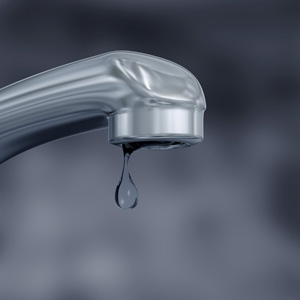By Faye Griffiths-Smith – Extension Educator Family Economics and Resource Management
 Did you know that the average person in the U.S. uses 100 gallons of water every day? Drinking, taking a shower, brushing your teeth, cooking, cleaning, doing the laundry, gardening and lawn care — with its many uses, water is essential to our lives yet our supply is limited. At the same time, our national and world populations are increasing. As a result, some areas around the world have been experiencing water shortages. What changes might you be able to make to reduce our water footprint?
Did you know that the average person in the U.S. uses 100 gallons of water every day? Drinking, taking a shower, brushing your teeth, cooking, cleaning, doing the laundry, gardening and lawn care — with its many uses, water is essential to our lives yet our supply is limited. At the same time, our national and world populations are increasing. As a result, some areas around the world have been experiencing water shortages. What changes might you be able to make to reduce our water footprint?
Sustainable Water Use Inside Your Home
The ideas listed below focus on changes we can make to use less water in our homes.
- Around the House
- Installing water efficient appliances and devices, families have the potential to reduce their water use by about 30 percent. This may also lead to lower household water and sewer bills.
- Repair leaky faucets and fixtures now. Small leaks can grow into larger ones over time, leading to large amounts of wasted water. 2,700 gallons of water can be wasted annually by a leaky faucet dripping only one drop per second.
- Try not to pour clean water down the drain unnecessarily. Save it for watering plants, cleaning or other uses.
- Look for the WaterSense label to help identify products that use water more efficiently. The WaterSense Program is a partnership program sponsored by the U.S. Environmental Protection Agency (EPA).
- In the Bathroom
- Turn off the water when soaping up your hands, brushing your teeth or shaving. This one step can save as much as 3000 gallons per year.
- Consider taking shorter showers. Use a timer to get a sense of how long a typical shower takes. Would it be possible to shorten your shower time by one minute or more? You can shut off the water while applying shampoo or using soap.
- Install water saving showerheads. There are aerating low-flow shower heads which mix air into the water stream and non-aerating heads that reduce water volume used.
- Showers are usually more water efficient than baths. For those who prefer baths to showers, a shallow bath will still save some water. Collect water run for a bath while it comes up to the desired temperature for other uses such as cleaning or watering plants.
- Check all faucets, toilets and pipes for drips and leaks. One method to check for water leaks in toilets is to put a few drops of food coloring in the tank, let it sit for at least one half hour and then check the toilet bowl to see if the water in the bowl is now tinted. If so, there is a leak between the tank and the toilet. 200 gallons can be wasted a year from a leaky toilet!
- Toilet tank displacement devices may help reduce water usage in older, less efficient toilets-possibly as much as 35%. There are toilet dams available for purchase. You can also make your own using a small plastic bottle weighted with rocks and water with the cover tightened securely. Do not use a brick for water displacement as a brick will deteriorate and clog pipes. Take care to place the device so that it will not interfere with the working parts within the tank. Test to make sure that there is still enough water in the tank so that it will flush properly.
- Consider replacing older toilets with newer, more efficient models. Toilets manufactured before 1992 when the Energy Policy Act became law and mandated more water efficient devices generally use about 3.5 to 7 gallons per flush. WaterSense labeled toilets are even more efficient. Newer technology has led to changes that make these toilets 20 % more efficient than other models currently available. As toilets use about 30 percent of indoor water, there is great potential to save water and money on water bills over time.
- In the Kitchen
- Keep a full water pitcher in the refrigerator for cold drinking water rather than run the faucet to get colder water.
- Use a spatula to scrap any remaining food on dishes before placing in the dishwasher rather than rinsing with water.
- When peeling and cleaning vegetables, use a large bowl of water and vegetable brush rather than running water.
- Food waste can be added to a compost pile instead of using a garbage disposal.
- Consider replacing your older dishwasher with a newer model. To be labeled with the federal EPA’s voluntary Energy Star label, dishwashers built since January 2012 are required to use about 9% less electricity and 27 percent less water.
- When hand washing dishes, use a dishpan instead of running water.
- In the Laundry
- Wash only full loads of clothes. If you must wash a less than full load, adjust the load selection size or water level.
- Your clothes washer is the second largest user of water in the home. Energy Star TM rated washers with a water factor of 9.5 or below use about 1/3 to 1/2 less water and half the energy per load according to the EPA. High efficiency washers are available and can use significantly less water, but they do cost more than conventional washers.
What are you already doing? Which practices might you consider changing in the near future? Even small changes in our water usage will add up over time.